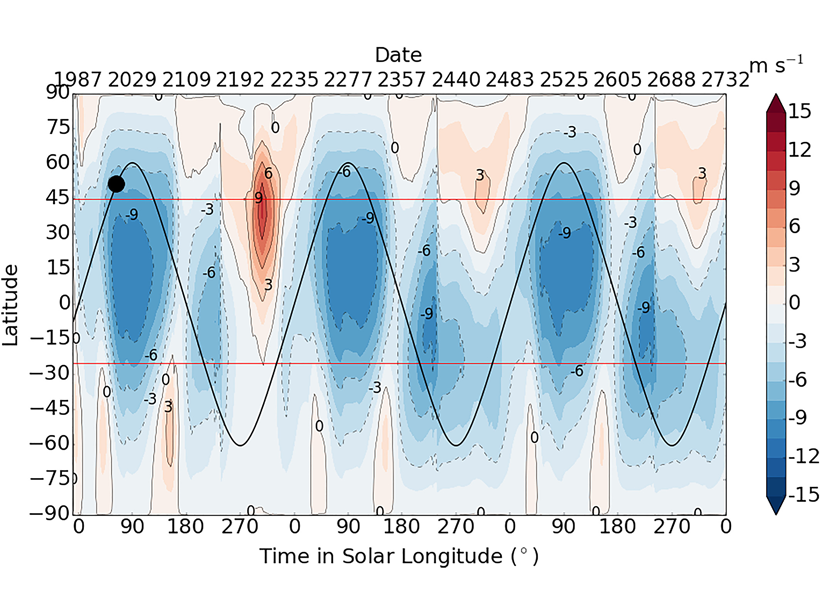Source: Journal of Geophysical Research: Planets
Pluto has a 1 pascal nitrogen atmosphere, so its pressure is 1/100,000 of the pressure of the Earth’s atmosphere, or less than a percent of that of Mars’ atmosphere. This world was visited by the New Horizons mission in a fly-by in 2015, and recently, very sophisticated climate model simulations were performed to study its atmosphere.
Despite its thinness, Pluto’s atmosphere hosts very active circulations driven by the very faint solar input at the distance of, on average, 40 times the Sun-Earth distance. These circulations are also strongly affected by the surface properties of the dwarf planet. Near the equator, the Sputnik Planitia basin hosts a large nitrogen ice cap that forms a part of the heart-shaped bright feature in visible images from the New Horizons mission.
According to Bertrand et al. [2020], a recent global climate modeling study benefiting from data from New Horizons, this ice cap drives an oscillating circulation in Pluto’s atmosphere, reminiscent of a heartbeat synchronized to Pluto’s day. The winds are driven by the flow caused by the night-day variations of condensation and sublimation (direct phase transition from ice to vapor) of this nitrogen ice cap, and the spiraling directions of these winds are controlled by the local topography. The same condensation-sublimation flow also drives an atmospheric retro-rotation higher up, where the atmosphere turns in the opposite direction compared to the solid body.
In addition to the general circulation of the atmosphere, the model was used to investigate the possible atmospheric mechanisms at play in creating some of the intriguing features on Pluto’s surface revealed by imaging from the New Horizons mission.
Citation: Bertrand, T., Forget, F., White, O., Schmitt, B., Stern, S. A., Weaver, H., et al. [2020]. Pluto’s beating heart regulates the atmospheric circulation: Results from high‐resolution and multiyear numerical climate simulations. Journal of Geophysical Research: Planets, 125, e2019JE006120. https://doi.org/10.1029/2019JE006120
—Anni Määttänen, Editor, JGR: Planets
Text © 2020. The authors. CC BY-NC-ND 3.0
Except where otherwise noted, images are subject to copyright. Any reuse without express permission from the copyright owner is prohibited.

